
The video at the end is of a TED talk, I recommend you watch it for your self, but the point of this piece is to highlight its most important points. Why are we highlighting this particular video? Because the speaker isn’t a right winger or funded by big oil. In fact he is a life long environmentalist, who worked together with the Obama administration to spend billions of dollars on renewables.
The issues that he highlights about renewables is something that the rational pro liberty movement has been saying for years. However, there is no ideology requirement to understand these technical points, there are both conservatives and liberals who are concerned for the environment and would like to see a rational environmental policy enacted. Now lets dive into his points.
Renewables are intermittent: Solar and wind are intermittent, meaning that they only produce electricity about 30% of the time. This is currently no viable technology that is able to store the electricity when renewables are working and release it when they are not. The electric grid however, requires a constant flow of electricity, not enough will cause black outs, and too much will cause blow outs. A state like California for example, which has recently became more reliant on solar, has to actually stop electricity coming in from the solar farms into the city, because there has been too much of it at times. The alternative is to suffer from blow outs of the grid.
On the other side, avoiding black outs during times when the sun is not shining or the wind is not blowing requires fossil fuel back ups. Particularly natural gas, as it is the easiest form of energy that you can turn up and turn down production for. Similar to turning up and down the gas on your home stove. Gas companies have understood this fact, and have committed millions of dollars into solar panel advertising.
Renewables are Dilute: Energy from renewables is dilute, meaning that any effort to scale up the energy production from solar and wind would have to use vast amount of lands. It takes 450 times more land for solar to produce the same amount of energy as a nuclear power plant.
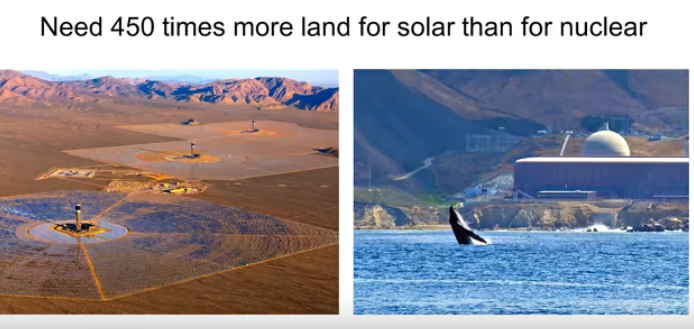
This results in a very large environmental impact. For example in order to build Ivanpah solar power plant, they had to clear the whole area of desert tortuous. Literally pulling them out of the borrows and transporting them to captivity where they later died. Both solar and wind kill birds. You may point out that cats kill millions of birds a year, but cats kill small birds like sparrows, wind and solar kill large birds on the endangered species list, like eagles. Wind also kills millions of bats each year. As a result, bat scientists have been speaking out about this. A species of bat called the hoary bat is in danger of going extinct right now, due the the significant expansion of wind. So the question is, in an effort to save the climate via renewable expansion, are we destroying the environment?
Increasing energy costs due to renewables: You may be kind of getting the picture now. The problems with renewables are not technical, but rather natural. No amount of innovation is going to make the sun shine more or the wind blow more. Solar and wind will remain dilute and intermittent. On the technical side, the cost of solar panels and wind turbines have come down in price significantly. However, that cost reduction has been outweighed by the challenges of integrating all the unreliable energy to the power grid.
For instance look at California. During the time that solar panels have come down in price, California has seen their electricity prices rise 5 times faster than the rest of the country.
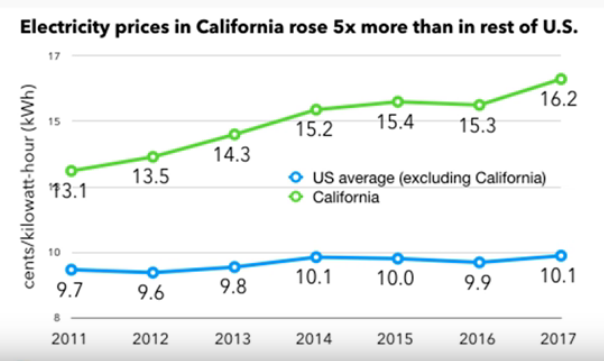
This is not unique to California either. We see the same thing happening in Germany, who is the world leader and solar and wind technologies.

So at this point you may say, dealing with climate change is just going to have to mean we will have to pay a bit more for energy. However, lets take a look at France. France gets twice as much energy from clean, zero emission sources than does Germany.
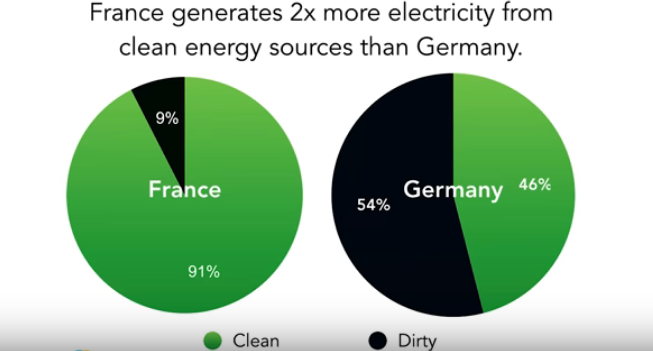
Yet, France pays about half as much for their electricity as does Germany.
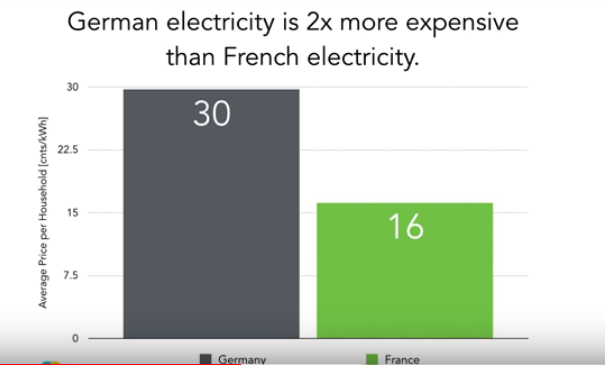
How is this possible? Well France gets most of its energy from nuclear power. If Germany had for instance spent 586 billion on deployment of nuclear instead of solar and wind, they would be generating 100% of their energy from clean zero emission sources today.
Is nuclear power safe and what do we do with the waste?: Not only is nuclear power safe, but it is actually the safest power source we currently have. Turns out that even wind energy is more deadly than nuclear. Below is a picture of two maintenance workers that did not survive. Wind energy kills more people per unit of energy than nuclear.
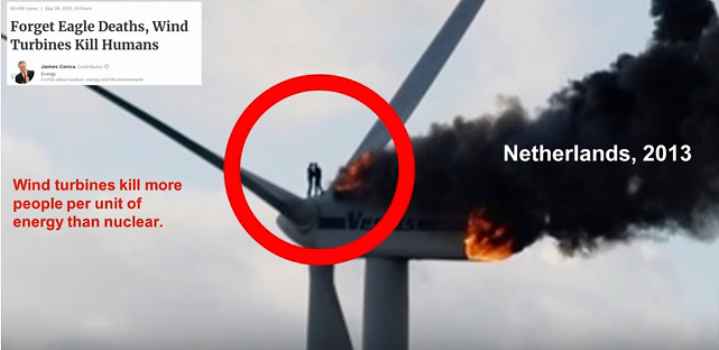
But what about the waste and materials? Material wise, solar plants require 17 times more materials, and that includes all the fuel used for the nuclear plants.

Waste wise, nuclear power plants actually produce little waste. All the waste from last 45 years of the Swiss nuclear program fits into this room.
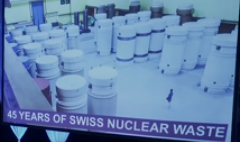
Nuclear waste is actually the only waste from electricity production that is safely contained and internalized. All other types of electricity production emits the waste into the environment, either as pollution or as material waste. People tend to think about solar panels and wind turbines as clean, but the fact is that there is no plan to deal with solar panels or wind turbines at the end of their life. Wind turbines are going to end up in our landfills, while experts worry that solar panels will just be shipped to poor countries to be dissembled, exposing people to a lot of toxic elements.
So if nuclear is superior in all facets, why are we not switching to purely nuclear? That is a good question, and that answer is that it has just been unpopular for many historical reasons. As a consequence a lot of environmentalist have just conceded and said, well we will just have to use all available clean energy sources. However, that is a problem as well. If we go back to the France example, if France tried to deploy more solar, it would actually have to decrease its nuclear energy. That is because to handle the huge variability of solar and wind, they would have to burn more natural gas. It is just really hard to ramp up and down a nuclear power during the variability of solar and wind. As a result, natural gas back up plants would need to be built. The consequence of this, is that if you try to use a mixture of clean energy, you would end up increasing CO2 emissions as compared to only using nuclear.
Now that we know, that renewables can’t save the plant, are we going to keep letting them destroy it? Or are we going to get over our irrational fears of nuclear and start deploying the actual reliable and clean energy source? Here is the full TED talk.





